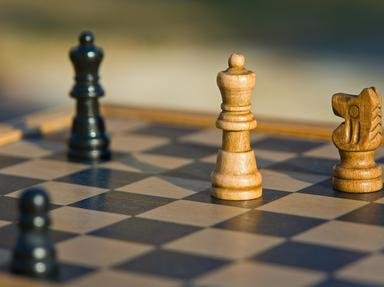Quiz Answer Key and Fun Facts
1. At the start of a Swiss System tournament (the kind that divides players into two groups), who does the strongest player face? (If nobody has any byes).
2. In a knockout tournament, how many people would get byes for the first round if there were 46 people in the division?
3. After the first round in a Swiss System tournament, if exactly 4 people have 0.5 points (there were two draws), would there be a sure chance that all of them will play one of the other two people who also drew? (Assuming there are no byes)
4. If the prize fund for a certain division is $1000-500-250-150, how much money would three people get if they all tied for second with 4.0 points, and how much money would the next person get if they were the only person with 3.5 points.
5. How many rounds are in a 'Double Round Robin' tournament if there are 6 players per division?
6. How many games would there be in a 4SS tournament if there were 17 people, and nobody leaves, nobody enters during the tournament, and nobody has any half-point byes?
7. If someone had the following results: win against someone who has 2.0 points, draw with someone who has 3.5 points, lose to someone who has 5.0 points, lose to someone who has 2.5 points, and win against someone with 1.5 points, how many tie-break points would you get if the tie-break method was 'Modified Median'?
8. If there are 30 people in the only division of a '5 Double Swiss System' tournament, and everyone draws all their games, how many tie-break points would everyone get if the tie-breaking method was 'Modified Median?'
9. In some tournaments, your score against the other people you tied with affects your place number. This is called 'Head to head.'
Which of the following scorers with the same number of wins would get the highest place, if these were their records against people with the same score?
10. If someone had the following results: loss, full point bye, loss, win, how many tie break points would they get if the tie break method was 'Cumulative'.
Source: Author
iggy4
This quiz was reviewed by FunTrivia editor
ozzz2002 before going online.
Any errors found in FunTrivia content are routinely corrected through our feedback system.
